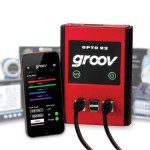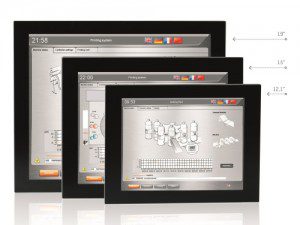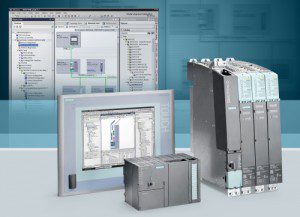
Recent years have brought major advances in HMI technology—increasingly affordable multitouch screens, a shift from resistive displays to projected-capacitive displays, and displacement of proprietary design platforms by web-based HTML5 platforms. That’s according to Derrick Stacey, solutions engineer at B&R Industrial Automation.
The spread of capacitive displays has expanded HMI use in industries needing bezel-free designs, mostly because they help machinery meet cleanliness and sterility requirements. “Solid glass screens and capacitive touchscreens often extend field life. Why? The screens don’t work through pressure points on the display to form the circuit, so they’re not vulnerable to wear and decreased sensitivity—a problem with resistive displays,” said Stacey. What’s more, HMIs with capacitive displays have multitouch capabilities that make industrial displays feel more like personal mobile devices, helping machine builders leverage how comfortable many users already feel with such interfaces.
The consumer mobile-device market is improving HMIs for industrial applications in other ways, too.
“Mobile devices such as smartphones and tablets have helped improve HMI performance, because their wireless communications, bright displays and portable processing power mean they themselves can serve as HMIs,” said Selam Shimelash, applications engineer at Opto 22.
Traditional setups park an HMI at one location, so operators must run back and forth between it and different parts of the production or process line. “In contrast, with an HMI on a tablet, this is no longer the case. Operators can check machine status and respond to alarms anywhere, anytime,” said Shimelash.
Here, a related trend is toward web-based visualization—in other words, cloud-based access for decentralized

personnel. That’s to help OEMs monitor remotely installed machines. Giving personnel remote system access decreases maintenance costs and helps end users manage systems more effectively. “For example, our system diagnostics manager is a web-hosted diagnostics page that a user can access from anywhere as long as the machine is on and he or she has network access and the IP address of the CPU of interest,” said Stacey. So, users get logger entries, hardware trees, motion-control statuses, and other CPU data sources in one place.
Hardware and software standardization is yet another HMI trend on open-source and proprietary systems alike. The marketplace is adapting to these standard technologies while pushing for changes to satisfy basic and advanced application demands.
Printing is a competitive high-tech market that’s constantly improving designs to produce more products faster than rival machines. These requirements drive cutting-edge HMI developments toward efficient and interconnected designs. “It also means that displays and systems behind them must be intelligent so no time is lost during operation—with web access to remotely notify managers if there is an issue,” said Stacey. Another consequence: Letting users make on-the-fly changes to machine operations (to keep up with varied production requirements) also necessitates modular hardware so operators can swiftly upgrade machines.

Other high-tech industries are pharmaceutical and medical. “Machines in these industries are high-end OEM machines that need the latest and greatest HMI designs to differentiate them in the marketplace,” said Stacey. These OEMs push for more complex features like multitouch, as the HMI innovations often outweigh panel costs.
In contrast, there are other industries in which pushbuttons, switches and toggles are the primary modes of machine interaction. But advances in high-end HMIs have reduced the cost of entry-level HMIs…so now, even for the simplest interfaces, it’s cheaper to use HMIs than maintain arrays of wired connections to physical pushbuttons and switches. This could soon make entry-level HMIs so common that they become basic components on almost every machine, according to Stacey.


Leave a Reply
You must be logged in to post a comment.